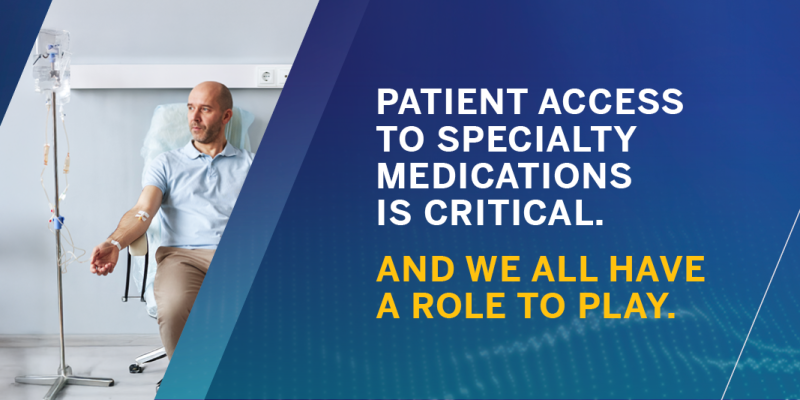
Lari Harding, SVP Healthcare Marketing:
Last month, Charles Esten—actor, musician, and comedian—delivered an unforgettable keynote at the National Association of Specialty Pharmacy (NASP) conference. While many know Esten for his role as Deacon Claybourne on the TV series Nashville, his topic wasn’t show business but, rather, something far more personal and much more relatable to members of the audience. Esten recounted how his daughter, after receiving a surprise diagnosis of leukemia, was supported throughout her treatment by a dedicated cadre of pharmacists and other healthcare professionals. His heartfelt expression of appreciation for those who helped his daughter resonated with everyone in the room.
His story was a powerful reminder of the crucial role specialty pharmacies play in patient care -- delivering life-saving medications to Americans presenting with myriad chronic illnesses such as cancer and multiple sclerosis. However, as important as specialty drugs are to healthcare, it’s a challenging market space for dispensers as reimbursement often falls below acquisition costs even as costs for dispensing and patient counseling are increasing. This financial issue is even more significant because of the brand-generic mix in specialty pharmacies.
Due to their high costs, and the subsequent hesitancy of some payers to approve prescriptions, specialty drugs comprise less than two-percent of prescriptions dispensed, but account for nearly 50% of all pharmaceutical spending. At the same time, IQVIA has disturbing data showing more than half of new prescriptions for novel medicines going unfilled and only 31% of patients remaining on their prescribed therapies after one year.
Some responsibility for these issues can be attached to the pharmacy benefit managers (PBMs). Despite the existence of approximately 1,800 accredited specialty pharmacies in the US, PBMs control around 75% of specialty fills and their frequent requirement that patients use their in-house pharmacies is limiting patient choice and complicating access to essential medications.
This issue is currently being challenged in Mulready v. PCMA, a case regarding an Oklahoma law that regulates PBMs.The U.S. Supreme Court recently sought input from U.S. Solicitor General Elizabeth Prelogar on the case.and its outcome could have far-reaching implications for the industry and state-level regulation of PBMs.
Despite all of this, the increasing impact of specialty medications on therapeutic regimens is directly reflected in the very positive financial outlook for the specialty pharmacy. With a current market value of more than $250 billion, specialty pharmacy is projected to have a compound annual growth rate (CAGR) of 8%-12% over the next five years.
The NASP conference explored many of these issues and challenges, offering insightful sessions on the Law of Pharmacy Reimbursement, State and Federal Advocacy Efforts and Wins, Federal Efforts to Address DIR and Fair Payment to Pharmacies, Piloting a Specialty Pharmacy Turnaround Time Quality Measure, and The Business Economics of Specialty Pharmacy. Each session gave full attention to the ongoing struggles specialty pharmacies face in protecting profitability while navigating a complex regulatory landscape.
Current conditions acknowledged, there is hope. Pharmacies can still negotiate better contracts for specialty pharmaceuticals, and there are federal and state laws that support pharmacies’ efforts to maintain fair reimbursement. For example, Part D plans are required to offer reasonable terms and conditions, allowing any willing pharmacy to participate as a network provider.
Esten’s keynote reminded us all of our mission: to ensure patients receive the medications they need. His story of his daughter's battle with leukemia is just one of a thousand stories of specialty pharmacists enabling better patient outcomes but it still echoes as a call to rededicate ourselves in our work to ensure safety, access, and affordability for patients who depend on specialty pharmacies.
